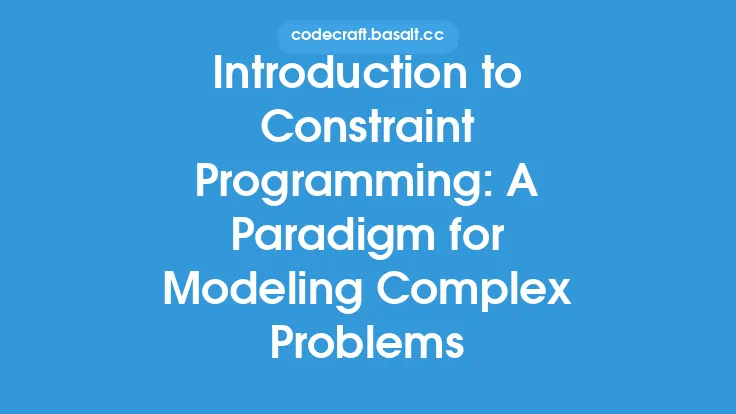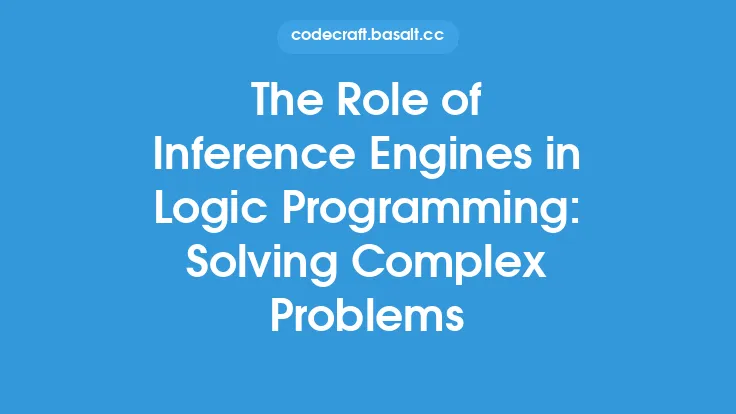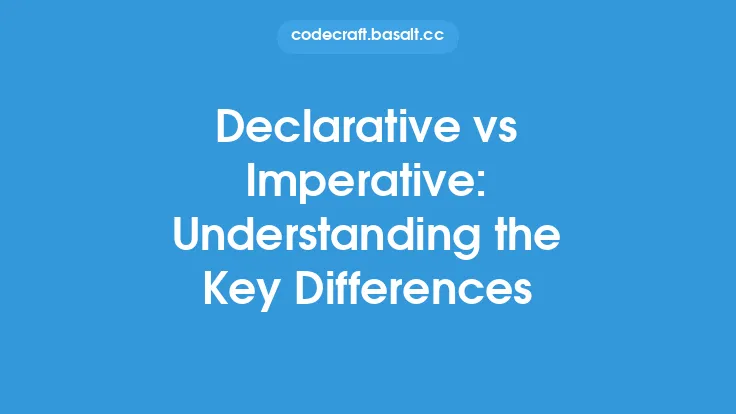Constraint propagation is a fundamental technique in constraint programming that enables efficient solving of complex constraint satisfaction problems. It is a process that involves reducing the search space by propagating the constraints through the variables, thereby eliminating impossible values and reducing the number of possible solutions. In this article, we will delve into the details of constraint propagation, its importance, and its applications in constraint programming.
What is Constraint Propagation?
Constraint propagation is a technique used to reduce the search space of a constraint satisfaction problem by propagating the constraints through the variables. It involves analyzing the constraints and the variables to determine the possible values that each variable can take, and then using this information to eliminate impossible values and reduce the number of possible solutions. The goal of constraint propagation is to reduce the search space to a point where the solution can be found efficiently, either by searching the remaining possible solutions or by using other techniques such as constraint satisfaction algorithms.
Types of Constraint Propagation
There are several types of constraint propagation, including:
- Forward checking: This involves checking the constraints as soon as a variable is assigned a value, and eliminating any values that are inconsistent with the constraints.
- Lookahead: This involves analyzing the constraints and the variables to determine the possible values that each variable can take, and then using this information to eliminate impossible values and reduce the number of possible solutions.
- Local consistency: This involves ensuring that the constraints are consistent with the values assigned to the variables, and eliminating any values that are inconsistent with the constraints.
- Global consistency: This involves ensuring that the constraints are consistent with the values assigned to all the variables, and eliminating any values that are inconsistent with the constraints.
Algorithms for Constraint Propagation
There are several algorithms that can be used for constraint propagation, including:
- Arc consistency: This algorithm involves ensuring that the constraints are consistent with the values assigned to the variables, and eliminating any values that are inconsistent with the constraints.
- Path consistency: This algorithm involves ensuring that the constraints are consistent with the values assigned to the variables, and eliminating any values that are inconsistent with the constraints, by analyzing the paths between the variables.
- K-consistency: This algorithm involves ensuring that the constraints are consistent with the values assigned to the variables, and eliminating any values that are inconsistent with the constraints, by analyzing the k-consistency of the constraints.
Applications of Constraint Propagation
Constraint propagation has a wide range of applications in constraint programming, including:
- Scheduling: Constraint propagation can be used to solve scheduling problems, such as scheduling tasks or resources, by reducing the search space and eliminating impossible solutions.
- Resource allocation: Constraint propagation can be used to solve resource allocation problems, such as allocating resources to tasks or projects, by reducing the search space and eliminating impossible solutions.
- Planning: Constraint propagation can be used to solve planning problems, such as planning routes or schedules, by reducing the search space and eliminating impossible solutions.
- Configuration: Constraint propagation can be used to solve configuration problems, such as configuring systems or products, by reducing the search space and eliminating impossible solutions.
Benefits of Constraint Propagation
The benefits of constraint propagation include:
- Improved efficiency: Constraint propagation can reduce the search space and eliminate impossible solutions, making it possible to solve complex constraint satisfaction problems efficiently.
- Increased accuracy: Constraint propagation can help to eliminate impossible solutions and reduce the number of possible solutions, making it possible to find the correct solution more accurately.
- Reduced computational complexity: Constraint propagation can reduce the computational complexity of solving constraint satisfaction problems, making it possible to solve larger and more complex problems.
Challenges and Limitations
Despite the benefits of constraint propagation, there are several challenges and limitations to its use, including:
- Computational complexity: Constraint propagation can be computationally expensive, especially for large and complex constraint satisfaction problems.
- Limited expressiveness: Constraint propagation may not be able to handle all types of constraints or variables, limiting its expressiveness and applicability.
- Difficulty in implementation: Constraint propagation can be difficult to implement, especially for complex constraint satisfaction problems, requiring specialized expertise and knowledge.
Conclusion
Constraint propagation is a powerful technique for solving complex constraint satisfaction problems, and has a wide range of applications in constraint programming. By reducing the search space and eliminating impossible solutions, constraint propagation can improve the efficiency and accuracy of solving constraint satisfaction problems, and reduce the computational complexity. However, it also has several challenges and limitations, including computational complexity, limited expressiveness, and difficulty in implementation. Despite these challenges, constraint propagation remains a fundamental technique in constraint programming, and continues to be an active area of research and development.





